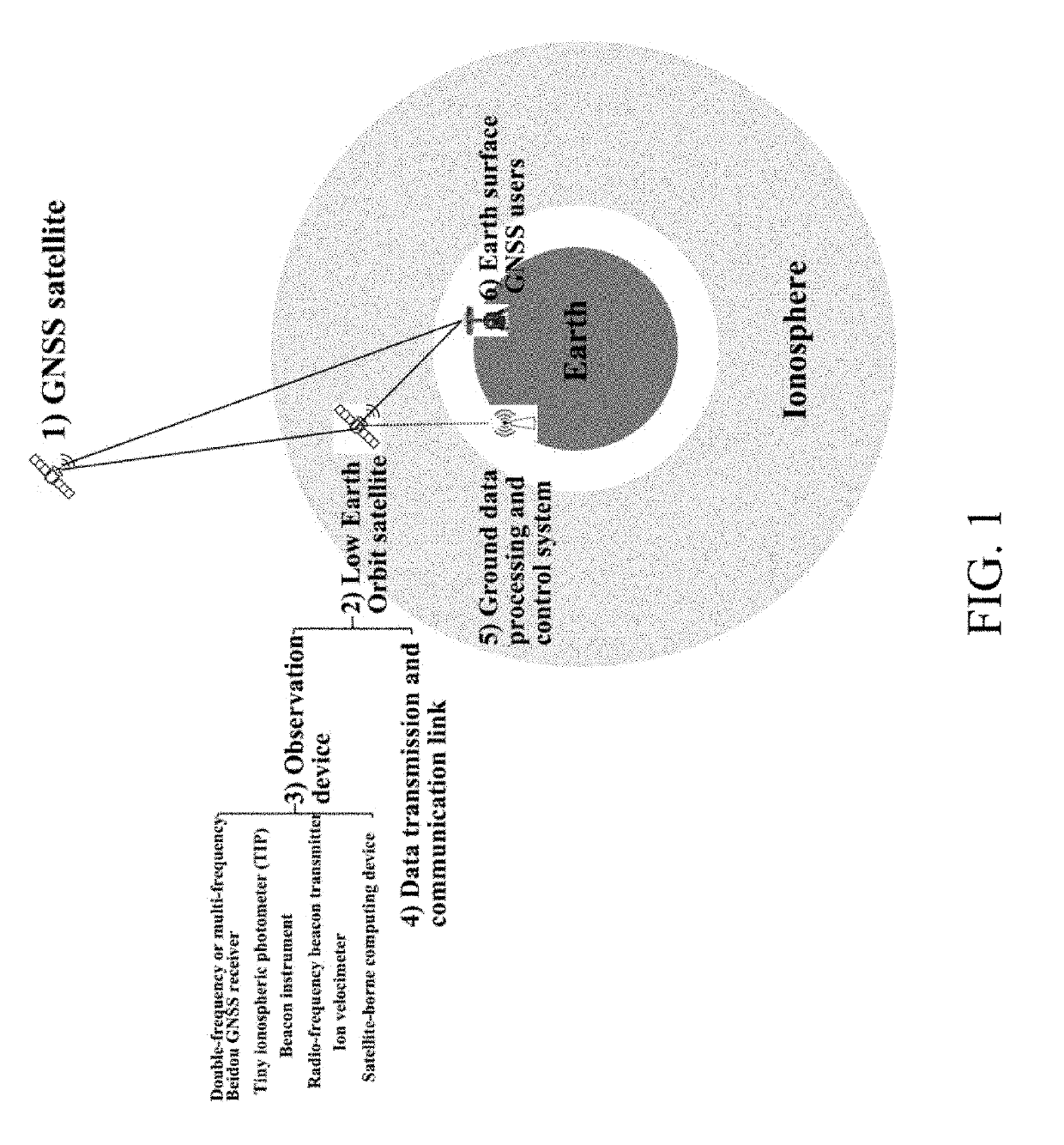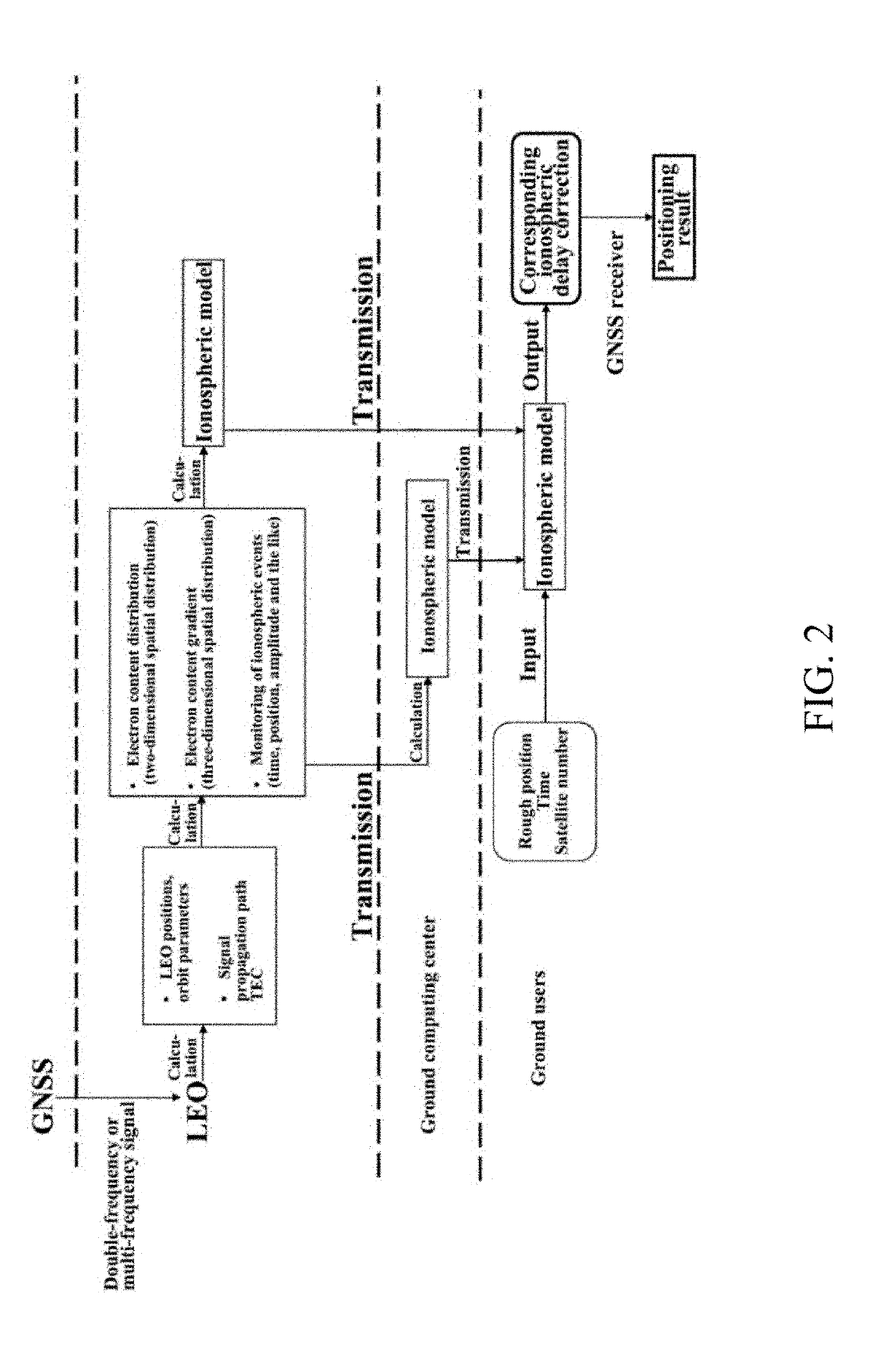Ionospheric delay correction method for leo satellite augmented navigation systems
a technology of augmented navigation and ionospheric delay, which is applied in the field of satellite positioning and navigation augmentation, can solve the problems of the complexity of theoretical models cannot be directly applied by gnss users, and the inability to ensure the accuracy of empirical models in all directions, so as to improve the accuracy, reliability and comprehensiveness of satellite navigation and positioning
- Summary
- Abstract
- Description
- Claims
- Application Information
AI Technical Summary
Benefits of technology
Problems solved by technology
Method used
Image
Examples
Embodiment Construction
[0037]To make the purpose, technical scheme and advantages of the invention clearer and more understandable, a further detailed description of the invention is given as follows in combination with the drawings and embodiments. It can be appreciated that the specific embodiment in the following description is only used for explaining the invention and is not used for limiting the invention. On the contrary, the invention includes all substitutes, modifications and equivalent methods and schemes defined by the claims and based on the spirit and scope of the invention. Furthermore, in order to make the general public better understand the invention, certain detailed parts of the invention are described in detail as follows. Those skilled in the field can still completely understand the invention without a description of these detailed parts.
[0038]The invention is further described as follows in combination with the drawings and specific embodiment; however, the invention is not limited...
PUM
 Login to View More
Login to View More Abstract
Description
Claims
Application Information
 Login to View More
Login to View More - R&D
- Intellectual Property
- Life Sciences
- Materials
- Tech Scout
- Unparalleled Data Quality
- Higher Quality Content
- 60% Fewer Hallucinations
Browse by: Latest US Patents, China's latest patents, Technical Efficacy Thesaurus, Application Domain, Technology Topic, Popular Technical Reports.
© 2025 PatSnap. All rights reserved.Legal|Privacy policy|Modern Slavery Act Transparency Statement|Sitemap|About US| Contact US: help@patsnap.com


